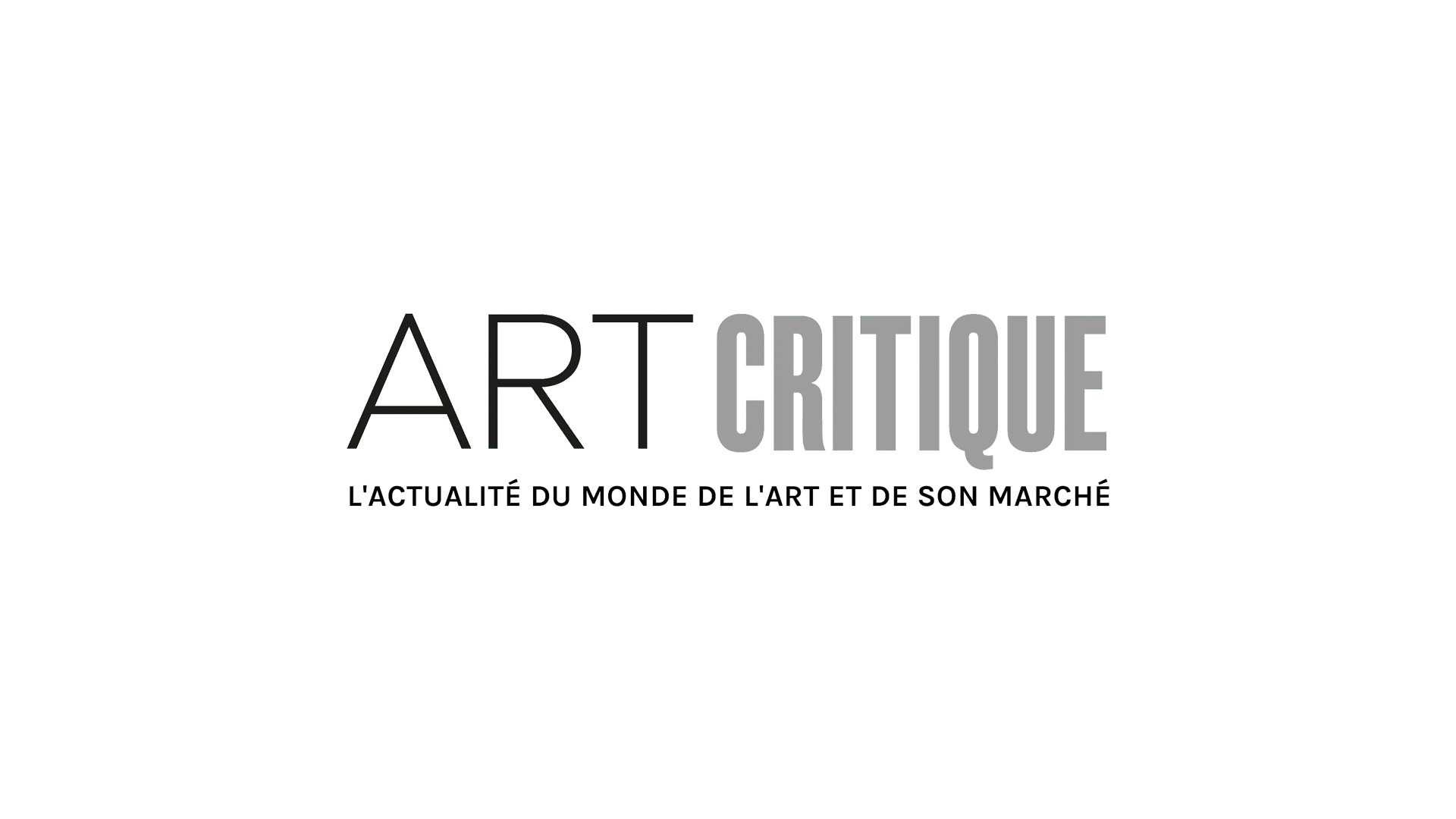From the late 1950s to the early 1960s, the Coenties Slip district, located near the docks at the southern tip of Manhattan, was home to a group of artists, who, each in their own way, helped shift American Art History from abstract expressionism to postmodernism. Included among these artists were Ellsworth Kelly, Jack Youngerman, Robert Indiana, Agnes Martin, Lenore Tawney, Jasper Johns, Chryssa Vardea-Mavromichali and Robert Rauschenberg.
In this rapidly changing New York neighbourhood (some of the warehouses linked to maritime trade were torn down to build skyscrapers), the streets unoccupied by businesses were dangerous. The artists lived in dilapidated buildings where many of the apartments often did not have bathrooms or kitchens. When Martin, Youngerman, Kelly and Indiana lived in the same building, they had no heating and had to go across the street to take their showers in the seamen’s union offices. However, the rents were low and on this triangular-shaped area all the apartments had a view of the East River. While the poverty may have been real, it was partially compensated by the spirit of cooperation that enlivened the community.
It was Kelly who told Martin that a loft was available when she wanted to move into Manhattan’s port area of in 1957. Barnett Newman helped her install one of her exhibitions at the Betty Parsons gallery while she wrote a passage full of praise for the guide to the Tawney solo exhibition at the Staten Island Museum in 1961. She bought Newman a few pieces including Homage to Greece (1959), probably created in honour of Greek artist Chryssa. Tawney, along with Indiana, also took Martin from a psychiatric hospital where she had undergone electroshock treatments. Indiana once abandoned the circular motif that he had been working on for some time when he discovered Martin’s circular compositions produced between 1959 and 1960. Martin and her roommate Johns (they lived together for a year) often went to parties hosted by Youngerman in his own apartment.
https://www.art-critique.com/en/2019/05/bronx-museum-of-the-arts-to-honour-the-work-of-alvin-baltrop/
While these artists may have shared material and intellectual resources, they each followed their own artistic path. At a time where the continued use of techniques begun by the abstract expressionists increasingly resembled Mannerism (Pollock and De Kooning both returned to a form of representation in the early 1950s), each of them invented a way to distinguish themselves.
Subsequently, Tawney, who studied tapestry with the famous Finnish weaver Martta Taipale at the Penland School of Crafts in 1954, moved to Coenties Slip in 1957. She used fabric to create cold shapes derived from the purest examples of geometric abstraction: the Bauhaus School, which she studied at the Chicago Design Institute in 1946 as well as several European abstract painters whose work she had seen while living in Paris between 1949 and 1951. By merging this fragile medium invariably associated with her status as a woman within the impersonal world of the first abstractionists, she detached herself from the virile and private tradition of the expressionists.
Kelly also distanced himself from the personal aspects of abstract expressionism when he moved into the neighbourhood upon his return from France in 1954. He, instead, proceeded to create work which refined shapes and reduced his chromatic palette. Following his collection of Windows and his La Combe (The Valley) series where he had successively transformed different windows into abstract patterns and severely reinterpreted the shadows cast by a ramp on the stairs. Kelly designed pieces that were radically inexpressive with origins that were not the product of an exploration of his feelings but rather the cold observation of reality.
Likely inspired by Kelly’s windows, Martin created a few of her own when she moved to Coenties Slip in 1957 (Desert Rain, Windows, This Rain) but soon gave up painting to begin collecting found objects. After having used bits of boat sails to prepare her canvases, she employed wooden planks from hulls as supports where she planted nails and bolts gathered in the streets. The use of these identical items designed in series allowed the artist to present works made by hand but whose craftsmanship was more anonymous than anything from the abstract expressionists.
Indiana also made assemblages formed from found objects and remnants of material which he had used to build his studio. As with Martin, this technique allowed him to disengage himself from the individual excesses of abstract expressionism. During this period, he started working on letter compositions. Although his subsequent work focuses on generic works like “Eat”, “Die”, “Love” and “Hope”, he introduced this typographic technique by implementing metal stencils used to inscribe the logos of neighbourhood businesses. As a result, Indiana created works that, although neutral in appearance, seemed to echo his immediate environment.

Chryssa who, beginning in 1962, would come to be known as one of the first artists to use the neon from advertising signs as artistic material, moved to Coenties Slip in 1955 after having completed art studies in Paris and then San Francisco. She started by crafting small sculptures in terracotta that included minimal shapes, thus combining a material that required working by hand with an impersonal design. Like Indiana, her interest then turned to the communication employed by business in the area. She then made plasterboards on which she assembled letters that, while referring to a common alphabet, did not produce any intelligible language.
The ambiguous relationship with symbols that calls into question art as the manifestation of an artist’s personality is prominent, in a very different way, in the work of Jasper Johns. In 1955, Johns began painting flat object-signs (flags and targets) on the flat surface of his canvases. While Johns continued to treat his subjects in a cold, artistic manner, particularly through the irony of art versus sign, he reintroduced representation. By doing so, Johns radically contrasted himself to abstract expressionism claims of immediacy and sincerity.
Robert Rauschenberg, with whom Johns shared the label neo-dadaist, conceived the Combine Paintings which, although inherently very different, heralded the concept of minimalist Specifics Objects. Located somewhere between painting and sculpture, Rauschenberg’s work blended objects and images on the canvass’ surface. Often forceful in composition (bright colours, dynamic application, strong contrasts), Rauschenberg’s works are, however, reminiscent of some action painting tableaus. These works also provide contrast to abstract expressionism’s individualism by incorporating the sociological reality of American society at the time.

Whether they used crafted material to design impersonal shapes, sacrificed gesturality for the sake of a mechanical process, or introduced representation and, more specifically, the symbols of contemporary American society within their paintings, artists from Coenties Slip refuted recent developments in abstract expressionism which had become merely a style. While they did not create a united movement, the techniques that they developed to distinguish themselves from their predecessors foreshadowed the minimalism and Pop Art movements that would be personified by the next generation. Indeed, during the period when Kelly, Johns and Rauschenberg’s work was being shown at MoMA as part of the “16 Americans” exhibition in 1959, some of the museum’s employees included future minimalists such as Sol LeWitt, Dan Flavin, Robert Mangold and Robert Ryman. And while some artists, like Tawney or Chryssa (who took part in Documenta 4 and 6 and the 1972 Venice Biennale), have been somewhat overlooked by history their work has nevertheless been seen by those who would become the pioneers of Pop Art. Over all, though, the group of artists from Coenties Slip contributed to shaping the perspective of future generations.
This article was originally published in French by Art Critique’s Orianne Castel on September 8th. The original can be read here.






